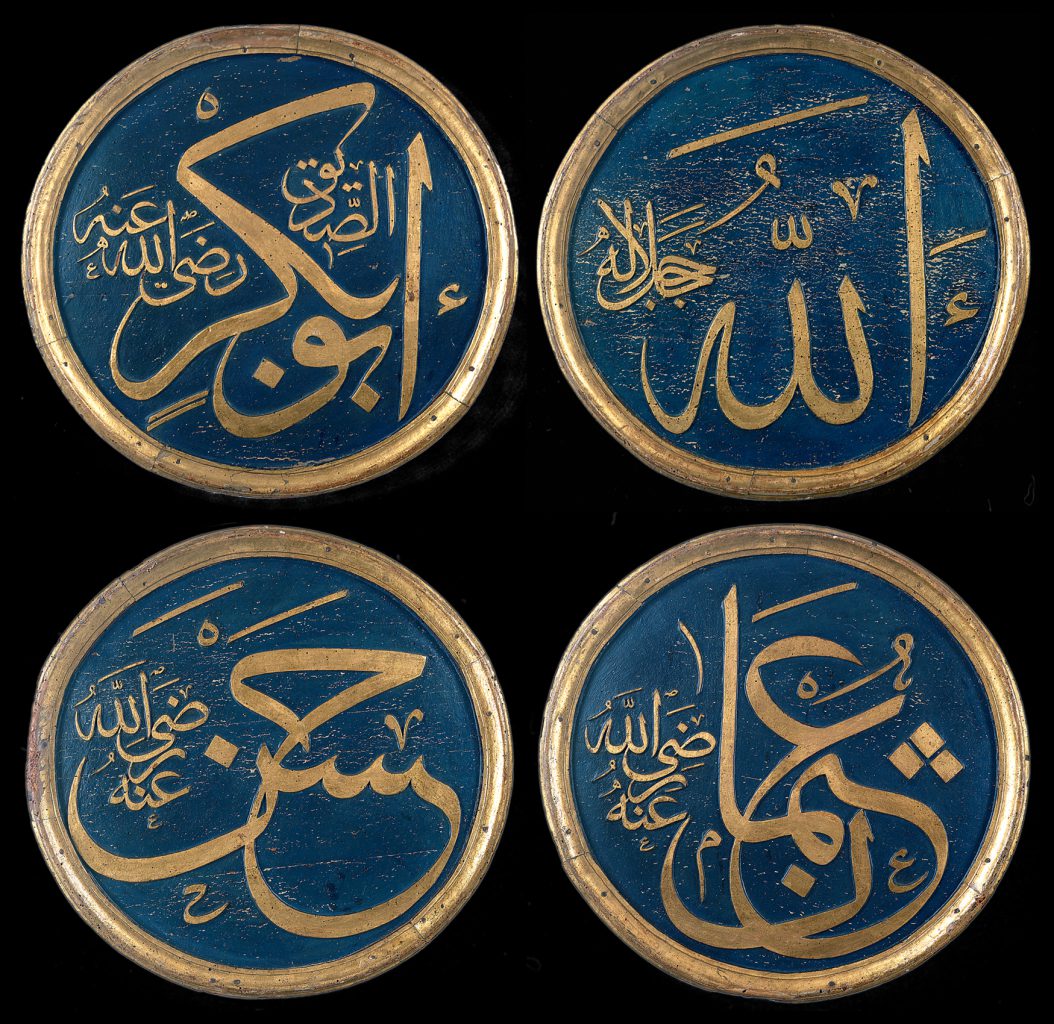



Title: Four Wooden Roundels
Date: 19th century
Location: Ottoman Turkey
Materials: wood, carved in champlevé, with gilt inscriptions on painted ground, over a layer of gesso
Dimensions: diameter 60cm
Accession Number: MXD 265
Other Notes:
Ottoman mosque architecture was dominated by central domes, the pendentives of which often bore roundels, of painted wood or tilework, with the names of God, Muhammad, Abu Bakr, ‘Uthman, ‘Umar and ‘Ali, and sometimes the names of Hasan and Husayn too, and appropriate prayers for each. The most famous, and the largest, are those designed by the 19th-century calligrapher, Mustafa ‘Izzet in the mosque of Ayasofya (converted from the great Byzantine church of Hagia Sophia) in Istanbul.
The four roundels in the Khalili Collection are inscribed with the names of God (MXD 265a), Abu Bakr (MXD 265b), ‘Uthman (MXD 265c) and Hasan (MXD 265d).
Script:
inscribed in thulth script
Bibliography:
N.F. Safwat, The Art of the Pen. Calligraphy of the 14th to 20th Centuries, The Nasser D. Khalili Collection of Islamic Art, volume V, London 1996, cat.88–9, pp.152, and 154–5.
S. Vernoit, Occidentalism. Islamic Art in the 19th Century, The Nasser D. Khalili Collection of Islamic Art, volume XXIII, London 1997, cat.1, pp.16–17.
J.M. Rogers, The Arts of Islam. Masterpieces from the Khalili Collection, London 2010, cat.282, pp.246–7.
Zoom
Close

Create your own collection of artworks that you can print or save as a PDF. Please enter you email to enable feature.
Small Flask | JLY 1075
Has been added to your collection.
TIP:
You can now access and view your collection from the main menu at any time.